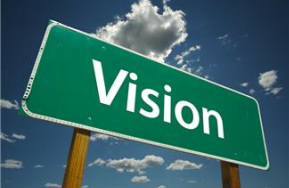Introduction
All too often students know how to complete a certain type of problem in math class, but have no idea how to apply this knowledge to other concepts or to real-life problems. Students have knowledge of math terms and concepts but they do not have a full understanding of "How?" and "Why?". I would like to see students view math as a skill that they can use every day in some way, not as a list of formulas to memorize for the test and never use again. Students frequently ask the questions: "Why do we have to know this?" and "Where am I ever going to use this?" The focus of this proposal is an academic unit on ordered pairs. This concept is one that is built upon as students progress through their courses in mathematics, therefore it is important that students have a solid understanding of this concept. Students also struggle with understanding how coordinates are related to their lives; students only see coordinates as being represented in a coordinate plane. Through the activities/technologies in this proposal, students will discover answers to their frequently asked questions and see how coordinates are related to their lives.
Technology
In order for students to grasp the idea that math is applicable, the technologies listed below will be used to teach a unit on ordered pairs. These technologies were chosen to help students see the application of ordered pairs and to help students visualize each concept in the unit.
- Video - This video will be used as a teaching tool for students. Instead of lecturing, students will watch this video and learn how to interpret graphs and use equations to create tables and graphs of data. Many students have already been exposed to graphing ordered pairs and this video is a nice way for students to review and build on previous knowledge. It can be viewed at home as homework (a flipped classroom idea) so when students come to class the following day an activity can be completed to build and apply these concepts.
- GPS: Geocaching – With the use of Geocaching, students will see the application of coordinates as not only in a coordinate plane but in applications such as maps or a way of finding their way around the world. By completing an activity in GeoCaching, students will see the relationship between the coordinate plane and maps/Earth. Students will use coordinates to navigate their way around to find different locations.
- Computer/Internet: Simulation Activities – Simulation activities are great hands-on tools that help students visualize concepts and see how they are applied in real world events.
This simulation activity helps students see the relationship between functions, tables, and
graphs. Students are able to manipulate/change one part (function, table, or graph) and see
how the others change as a result.
2. City tour -
In this activity, students identify locations on a map using coordinates and the give
coordinates for specific locations. This allows students to see how coordinates relate to
maps and finding locations.
3. Arithmetic Sequences -
Students will explore the graphs of arithmetic sequences and see the relationship between
both when the sequence changes.
4. Finding Your Way Around -
This lesson plan includes websites where students can practice graphing coordinates and
identifying coordinates on the graph. Students also explore maps and how to find locations
using coordinates.
- Technology Unit Projects - As a culminating activity, students will complete projects that will showcase their understanding of the concepts in the unit. Students will have the freedom to use whatever program/technology they want for their project. The focus of this assignment is not solely on using technology, but picking and using a technology that will best articulate their understanding. As part of the introduction to this project, students will discuss different technologies and what they can be useful for. Some technologies that students may think about using are listed below:
2. Prezi/GooglePresentation - create a presentation
3. Glogster - create an interactive poster
4. Audacity/Garageband - create a song or podcast
5. Weebly/Googlesites - create a website
6. Blogger/Edublogs - create a blog
- Classroom Performance System (CPS) – Students will be given a short 3-4 question quiz at the end of each day using the CPS to see how well they understood the information for the day. Questions will be focused on the application of the content.
These technologies will be evaluated by monitoring student responses to the technology and their accuracy directed toward the completion of each day's tasks and activities.

